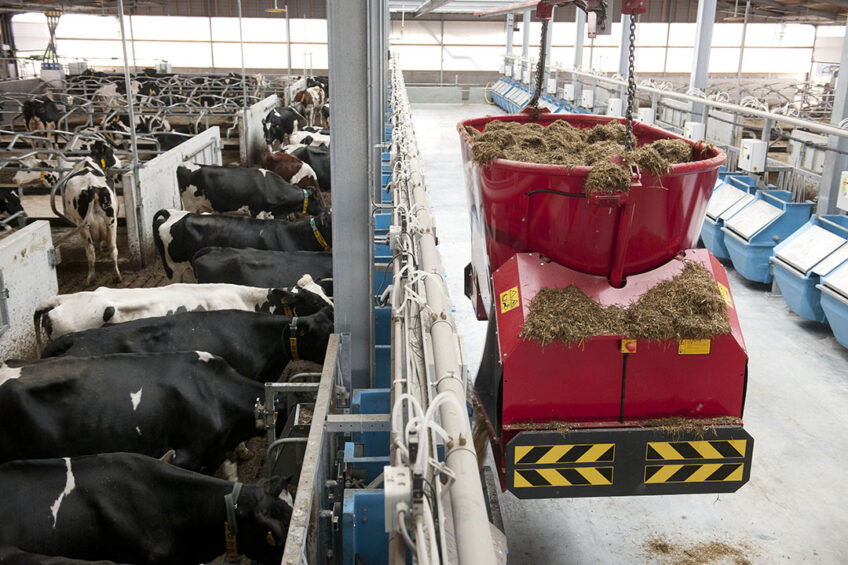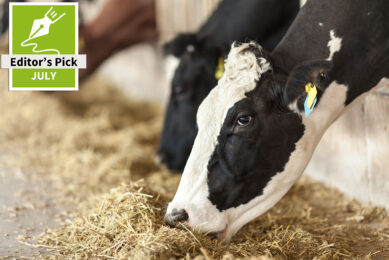4 smart feeding technologies involved in the dairy industry

Smart dairy feeding is defined as an innovative approach to feeding individual animals. This article discusses smart technologies that are able to improve dairy feeding.
Dairy farmers need to apply various alterations in their production systems to meet the growing demand for milk and meat products, while considering farming sustainability and ensuring high standards of animal health and welfare.
Technological and engineering tools and materials, such as advanced sensors and sensing devices, data processing and machine learning methods are implemented to monitor and control feeding processes in real-time and to optimise feeding strategies.
Why is smart feeding effective?
- Smart feeding improves:
- nutrient utilisation efficiency,
- reduces nutrient excretion and feed costs,
- promotes safe,
- high-quality milk and meat products,
- improves dairy cow welfare,
- reduces labour requirements,
- saves time,
- reduces environmental and health stressors,
- keeps dairy cows in great condition and highly productive with less metabolic stress,
- minimises adverse environmental impacts, and
- enhances sustainability and competitiveness in dairy industry.
Top smart feeding technologies applied in the dairy industry are discussed in the next section.
 Automatic programmable feeders
Automatic programmable feeders
Automatic programmable feeders are used to provide individual cows with the right amount and composition of feed at a given time. These feeders are designed to provide the correct levels of nutrition to dairy cows, up to 12 feedings per day. Feed is dispensed via an electric gear motor and the animals are summoned by audio signal for feeding. Automatic feeding systems allow better control of feeding times for each breed’s nutritional requirements, optimum production cycle phase and adjustments to accommodate for changes such as weather conditions. In addition, a balanced diet evenly distributed throughout the day creates a calmer animal.
 Mixing and feeding robot
Mixing and feeding robot
Mixing and feeding robots are self-contained battery-operated vehicles with specially shaped chambers in which the feed is mixed both vertically and horizontally. These robots are capable of automatically feeding a self-mixed balanced ration. The unique shape of the augers and their high mixing speed creates proper mixing of even small quantities of feed to ensure a balanced well-mixed ration.
 Internet of Things (IoT)
Internet of Things (IoT)
Internet of Things is a new paradigm about the ability of connected devices through high-speed Internet to sense, gather and share data using the Internet so that it can be processed and used to fulfil common goals. A general emphasis on the Internet of Things in feed production is driving platforms to deliver on the latest industrial technologies, such as Ethernet/industrial protocol and cloud connectivity. Sensor functionality can be expanded beyond measuring physical phenomena to the raw data and will be further integrated with automation technology.
 Artificial intelligence
Artificial intelligence
Artificial intelligence is defined as human intelligence stimulation in machines that exhibit properties linked with the human mind including learning, rationalising and problem solving. Artificial intelligence is used to comprehend and design systems exhibiting intelligence traits including the ability to learn, to derive knowledge from data, to rationalise and to take actions to achieve specific goals. Artificial intelligence algorithms transform big data into valuable information to improve decision making on dairy farms. In addition, artificial intelligence technologies are used to control barn environments, to organise dairy cow flow and to manage data.
Challenges and future perspective
Practical applications of smart feeding technologies are challenging because they require an ability to estimate the nutrient requirement of each animal in a short period after filtering and cleaning all the data collected by sensors. Furthermore, nutrient requirements vary in form and magnitude between individual cows in a population. Therefore, using the average individual animal to calculate nutritional requirements may not meet the needs of many individuals. Furthermore, the animals receiving quantities of nutrients exceeding their requirements will have lower nutrient efficiency, and higher nutrient excretion. Moreover, it is necessary to develop integrated user-friendly systems and to train end-users to have a robust on-farm smart feeding system.











